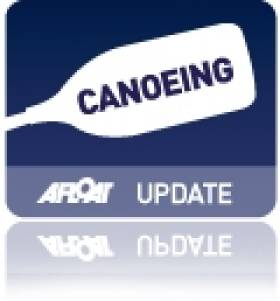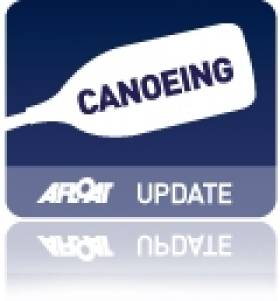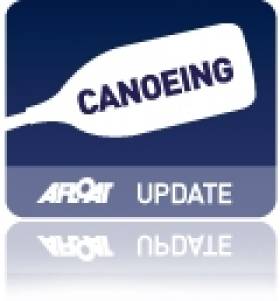Displaying items by tag: Rheinisch,
# CANOEING; Eoin Rheinisch qualified for the semi-finals of the Olympic Games with a fine first run in the K1 canoe slalom heats. Fifteen off the 22 competitors went through, and Rheinisch will go off 12th on Wednesday.
His first run of 89.97 placed him sixth – though team manager Karl Dunne had to launch an immediate objection to remove a penalty of two seconds given wrongly for a supposed touch on gate 19. Rheinisch could not improve on that in the second run – he had another penalty-free paddle, but clocked 90.72 seconds. His first run was enough to see him through in heats won by Hannes Aigner of Germany, who clocked a superb 83.49 seconds in his second run on a technically difficult course.
Benjamin Boukpeti, the man who went off last in the Olympics in Beijing and pushed Rheinisch out of bronze medal position, qualified in 14th, and Richard Hounslow of Britain had to produce a good run under pressure to qualify in 11th. Among those eliminated were Scott Parsons of the United States and Warwick Draper of Australia.
Olympic Games – Canoe Slalom: Men’s K1 Heats (Irish interest): 1 Germany (H Aigner; 2nd run) 83.49; 12 Ireland (E Rheinisch) 89.97.
# CANOEING: Ciaran Heurteau gave an outstanding performance for the second day in succession to reach the final of the Canoe Slalom World Cup in Pau in France. Heurteau had finished 13th in the heats to make the semi-finals, but he bettered that this morning, finishing third in 101.74 seconds. Eoin Rheinisch also touched no gates in his round, but his time of 106.90 placed him in 22nd, with just 10 going through to the final.
Canoe Slalom World Cup, Pau, France (Irish interest)
Men, K1 Semi-Final (First 10 to Final) : 3 C Heurteau 101.74; 22 E Rheinisch 106.90
Two Irish Canoeists Progress at World Cup in France
# CANOEING: Ireland’s Ciaran Heurteau (13th) and Eoin Rheinisch (32nd) qualified for the semi-finals of the Canoe Slalom World Cup in Pau in France today. Heurteau qualified with a very good first run, while Rheinisch had to wait until his second run to qualify.
Canoe Slalom World Cup, Pau, France (Irish interest)
Men's K1 Heats (40 qualify for Semi-Final): 13 C Heurteau 91.83 (1st run); 32 E Rheinisch 93.63 (2nd run).
Rheinisch Qualifies for Olympic Games in Canoe Slalom
#CANOEING: Eoin Rheinisch qualified for the Olympic Games with a fault-free round in the K1 (racing kayak) at the European Championships in Augsburg in Germany today. The Kildare man, who finished 4th at the Beijing Olympics, took 12th place with a run of 98.38 seconds in the semi-final. It gave him the first of two places available to boats from countries not already qualified; Croatia’s Dinko Mulic took the second by finishing 17th. Ireland’s Ciaran Heurteau finished 20th.
European Canoe Slalom Championships, Augsburg, Germany
Men – K1 (racing kayak) Semi-Final (first two countries not already qualified for Olympic Games qualify)
1 Germany (H Aigner) 93.99; 12 Ireland (E Rheinisch) 98.38; 17 Croatia (D Mulic) 100.42; 20 Ireland (C Heurteau) 100.20; 21 Slovakia (J Sajdibor) 100.27.



























































